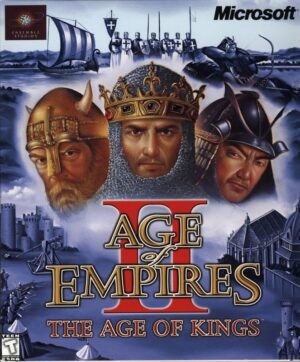Retro Replay Review
Gameplay
Half-Life 2: Lost Coast distills the core mechanics that made Half-Life 2 a breakthrough in first-person shooters into a concise, high-intensity single level. You step into Gordon Freeman’s boots once more, navigating coastal docks, scrambling up ladders, and ducking behind cover as Combine soldiers and headcrab zombies converge. Despite being a standalone mini-chapter, Lost Coast feels remarkably complete: it offers varied combat encounters, environmental puzzles, and the familiar weight of the gravity gun as you toss barrels and barricades at foes.
One of the most engaging aspects of Lost Coast is the dynamic pacing. You begin with a quiet, almost contemplative trek along the shoreline, only to be thrust into all-out gunfights and explosive set-pieces as you infiltrate the St. Olga church. Even veteran players of Half-Life 2 will feel the thrill of the Source engine’s physics puzzles—shattering glass, rolling objects, and environmental hazards all play into your survival. The level’s design ensures there’s always something new just over the horizon, from tight corridors swarming with Combine to open vistas perfect for sniping.
Valve also integrates an optional developer commentary system into Lost Coast, replacing enemy encounters with informative nodes. Activating these speech bubbles pauses the action and offers insights into level design, technical hurdles, and artistic choices. This commentary track adds replay value, transforming Lost Coast into both a game and an interactive postmortem on Source engine development. For players who want to learn the “why” behind the layout of a choke point or the color palette of a seaside ruin, these annotations are invaluable.
Graphics
Lost Coast is best remembered as Valve’s showcase for high dynamic range lighting (HDR), and it does not disappoint. The shimmering waves of the ocean reflect the setting sun in real time, creating realistic glare and soft color gradients. Stone walls of the church and rusted metal walkways are bathed in warm highlights and deep shadows, adding depth and atmosphere that felt groundbreaking in its 2005 release.
The level’s coastal environment provides a rich canvas for the Source engine’s technological prowess. Textures on the wooden dock planks show individual grains and weathering, while the sea foam spray and water caustics demonstrate smooth transitions between lit and unlit areas. Explosions and muzzle flashes cast realistic, transient illumination on nearby surfaces, heightening the tension during firefights.
Even on modern hardware, Lost Coast’s HDR implementation remains a visual treat. Valve’s careful balancing of bloom, lens flare, and shadow detail ensures that the lighting enhances rather than overwhelms gameplay. While the geometry and texture resolutions are rooted in mid-2000s standards, the intelligent use of light and color elevates every scene, from misty cliffside approaches to the burning wreckage around the church’s defenses.
Story
Although Lost Coast is not part of Half-Life 2’s main narrative arc, it weaves in subtle threads that enrich the overall saga. The level opens shortly after Gordon Freeman’s infamous fall, and he is promptly greeted by a mysterious fisherman who steers him toward St. Olga’s church. This brief exchange hints at the vast network of Resistance allies working behind the scenes to reclaim territory from the Combine.
As you breach the church grounds, scattered audio logs and environmental details reveal localized lore—the villagers’ desperation, the Combine’s ruthless rocket launches, and the church’s symbolic importance. While Lost Coast does not thrust heavy exposition at the player, it respects Half-Life’s tradition of “show, don’t tell.” Every bullet hole, every abandoned radio transmitter reinforces the plight of the inhabitants and the stakes of your mission.
The story culminates in a climactic showdown against Combine forces operating a headcrab rocket launcher. Although brief, this finale delivers a satisfying narrative payoff: disabling the weapon feels like a tangible victory for the Resistance. Lost Coast may be small in scope, but its focused storytelling complements the broader themes of oppression and rebellion that define the Half-Life universe.
Overall Experience
Half-Life 2: Lost Coast stands out as more than just a bonus level—it’s both a tech demo and a tightly crafted gameplay vignette. For newcomers to Half-Life 2, it offers a digestible taste of Valve’s signature blend of physics-driven combat and environmental storytelling. For longtime fans, it provides a nostalgic reminder of the days when the Source engine was cutting-edge, complete with developer commentary that peels back the curtain on Valve’s creative process.
Despite its short playtime (around 30 minutes for a steady run with commentary), Lost Coast feels like a premium experience due to its polish and ambition. It’s freely available to anyone who owns Half-Life 2 or through Valve’s archives, making it an unbeatable value. The level’s interplay of light, water, and verticality ensures that even a single revisit can yield fresh discoveries.
In the end, Lost Coast succeeds on every front: it delivers exhilarating combat, stunning visuals, and meaningful context for the Half-Life lore. Whether you’re chasing the latest graphics benchmarks or simply craving a swift, memorable FPS outing, Lost Coast is worth exploring. It remains a landmark in game development history and a testament to Valve’s commitment to innovation and storytelling—no matter how small the setting.
 Retro Replay Retro Replay gaming reviews, news, emulation, geek stuff and more!
Retro Replay Retro Replay gaming reviews, news, emulation, geek stuff and more!









Reviews
There are no reviews yet.